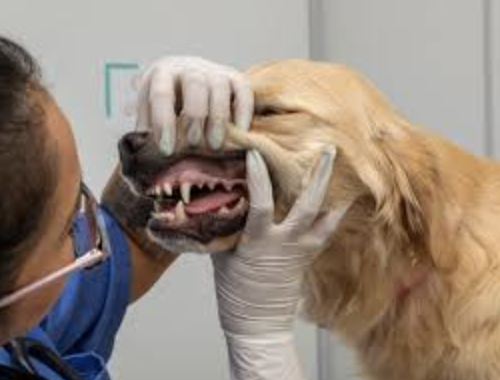
Dental disease is a common issue in both dogs and cats, impacting nearly 80% of pets over the age of three. If untreated, it can cause pain, tooth loss, and even serious infections that affect other organs. Here’s a quick guide to understanding the causes, symptoms, and treatments, and why regular vet visits are essential.
Causes
- Plaque and Tartar: Plaque builds up on teeth, hardening into tartar, which leads to gum inflammation.
- Bacteria: Bacteria in the mouth can worsen dental disease and affect other organs if it spreads.
- Genetics and Breed:
- Small dog breeds are particularly prone due to their closely spaced teeth.
- Cats often develop a painful condition called feline resorptive lesions, where their teeth erode.
Symptoms to Watch For
- Bad Breath: One of the earliest signs of dental disease.
- Swollen Gums and Drooling: Inflamed gums can cause drooling and discomfort.
- Difficulty Eating: Pets may eat less, chew awkwardly, or paw at their mouth.
- Tooth Discolouration and Tartar: Visible tartar buildup or changes in tooth color.
Treatment Options
- Professional Cleaning: Vets can remove plaque and tartar under anesthesia for a thorough cleaning.
- Tooth Extractions: In severe cases, damaged or infected teeth may need removal.
- Home Care: Daily brushing, dental chews, and special diets can help prevent plaque buildup.
Importance of Regular Vet Visits
- Early Detection: Vets can spot and address early signs of dental disease, preventing progression.
- Health and Comfort: Routine check-ups ensure your pet’s health and reduce their risk of discomfort.
- Preventing Complications: Left untreated, dental disease can lead to infections that affect other organs, like the heart and kidneys.
Keeping up with dental care and regular vet visits ensures a healthier, happier life for your pet.
